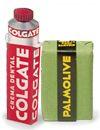Financial Reporting Analysis
Ratio Analysis
Of
Colgate Palmolive (INDIA) Limited
Submitted to: Dr. T. P. GHOSH
Submitted by:
Group I
Apurva Shahi
Deepali Agarwal
Konda Moulika
Mallipati Manoj
Mitali Pravin
Nidhi Agarwal
Contents:
Abstract
Introduction and details of project
Colgate Palmolive( India) Limited Profile
Ratio Analysis of Colgate Palmolive( India) Limited
Profitability Ratios
Liquidity Ratios
Solvency Ratios
Turn-Over Ratios
Valuation Ratios
Conclusion
Abstract:
A financial statement is a collection of data organized according to logical and consistent accounting procedures. Its purpose is to convey an understanding of some financial aspect of a business firm. Financial analysis (also referred to as financial statement analysis or accounting analysis) refers to an assessment of the viability, stability and profitability of a business, sub-business or project. It is performed by professionals who prepare reports using ratios that make use of information taken from financial statements and other reports. These reports are usually presented to top management as one of their bases in making business decision.
The present paper explains in detail the analysis of financial statements of Ranbaxy ltd. It provides insights into two widely used financial tools, ratio analysis and common size statements analysis. The objective of this project is to help the reader understand how these tools should be used to analyze the financial position of a firm. To demonstrate the process of financial analysis, Colgate Palmolive (India) Limited Balance Sheets and Income statements for the past five years are analyzed in this project.
Introduction:
Title of the Project: Financial Ratio Analysis of Colgate Palmolive (India) Limited.
Objective of the Project:
To compare financial ratios from the last five years of "Colgate Palmolive Limited".
To analyze the profitability of the company.
To check the liquidity position of the company.
To gain insight into long term solvency of Colgate.
To check the operational value of the company.
To understand the turnover ratios of Colgate.
Colgate Palmolive (India) Limited
Company Profile:
Colgate-Palmolive (India) Limited is engaged in the Personal Care business, which includes Oral Care. The Company's oral care product includes toothpaste, toothbrushes, toothpowder, whitening products and mouthwashes. Its personal care product includes body wash, liquid hand wash, shave preps, skin care and hair care. The Company's household care product includes surface care. Colgate-Palmolive Company is the Company's ultimate holding company.
Colgate has, for the third consecutive year from 2011 to 2013, been ranked as India's #1 Most Trusted Brand across all categories by Brand Equity's Most Trusted Brand Survey and is the only brand to feature in the top three since the inception of the survey twelve years ago.
In November 2007, it acquired a 75% of equity interest in Advanced Oral Care Products, Professional Oral Care Products and SS Oral Hygiene Products, the company is the fastest growing and one of the oldest companies catering to personal products. The company is regularly coming up with the new products and has been a consistent financial performer.
Core Values:
The three important value s, which are driving Colgate Palmolive Limited, are:
Caring
Global Teamwork
Continuous Improvement
Vision:
Colgate's vision is to become the best truly global products company. Colgate's focus on our "Global Values" and "Managing with Respect Principles" drives our success.
Ratio Analysis of Colgate Palmolive (India) Limited
The most important tool for financial statement analysis is "Ratio Analysis".
Ratio Analysis: It is an analysis of strength and weakness of an organization by establishing the quantitative relation among the balance sheet and income sheet of such an organization
Profitability Ratios:
These ratios that are used to assess a business's ability to generate earnings as compared to its expenses and other relevant costs incurred during a specific period of time. For most of these ratios, having a higher value relative to a competitor's ratio or the same ratio from a previous period is indicative that the company is doing well.
Net Profit Ratio:
N.P.R= PAT/ TOTAL REVENUE
Net profits show how much each dollar earned by the company is translated into profits. A low profit margin indicates a low margin of safety and higher risk that a decline in sales will erase profits and result in a net loss.
Analysis:
The net profit ratio is marginally declining over the five years from 20.53% in 2010 to 14.87% in 2014. But, the net profit as well as the total revenue is increasing over the five years. Therefore, the reason for net profit ratio decline is the increase in the expenses and manufacturing costs of the company from 2010 to 2014. Other environmental factors responsible for this decline are increased competition, inflation and the pricing strategy of the company.
Reasons for decline in net profit ratio:
Increase in the cost of raw materials consumed and the purchase of stocks in trade.
Increase in depreciation and amortization expenses.
Increase in other expenses as well.
Return On Equity:
ROE= PAT/ SHAREHOLDERS' FUNDS
Return on equity ratio shows the amount of net income as a percentage of shareholders' equity. It measures a company's profitability by revealing how much profit a company generates with the money shareholders have invested. As a shareholder, equity represents your money and so it makes good sense to know how well management is doing with it.
Analysis:
The return on equity is declining over the five years from 129.78 in 2010 to 89.99 in 2014.
Reasons for decline in return on equity:
The net profit or profit after tax is increasing at a low rate as compared to the increase in equity.
The share capital is constant in 2013 and 2014. So the change in return on equity is not because of the investment in the shares of the company.
However, the equity of the company is increasing due to the increase in reserves and surplus of the company.
Therefore, the increase in the reserves and surplus leads to increase in the overall equity, thus, leading to a decline in the return on equity in 2014.
Liquidity Ratios:
These ratios measure the ability of a company to pay off its short-term liabilities when they fall due. They show the number of times the short term debt obligations are covered by the cash and liquid assets. If the value is greater than 1, it means the short term obligations are fully covered.
Generally, the higher the liquidity ratios are, the higher the margin of safety that the company posses to meet its current liabilities. The liquidity of Colgate is explained by following ratios.
Current Ratio
The ratio is mainly used to give an idea of the company's ability to pay back its short-term liabilities (debt and payables) with its short-term assets (cash, inventory, receivables). The higher the current ratio, the more capable the company is of paying its obligations. A ratio under 1 suggests that the company would be unable to pay off its obligations if they came due at that point. While this shows the company is not in good financial health, it does not necessarily mean that it will go bankrupt - as there are many ways to access financing - but it is definitely not a good sign.
The current ratio can give a sense of the efficiency of a company's operating cycle or its ability to turn its product into cash. Companies that have trouble getting paid on their receivables or have long inventory turnover can run into liquidity problems because they are unable to alleviate their obligations. Because business operations differ in each industry, it is always more useful to compare companies within the same industry.
This ratio is similar to the acid-test ratio except that the acid-test ratio does not include inventory and prepaid as assets that can be liquidated. The components of current ratio (current assets and current liabilities) can be used to derive working capital (difference between current assets and current liabilities). Working capital is frequently used to derive the working capital ratio, which is working capital as a ratio of sales.
Analysis: Colgate's Liquidity Ratio, Current Ratio, we notice it is even below the threshold level of 1.3, thereby making it a very serious situation for the management to consider.
When seen in isolation, Colgate's current ratio over last five years, we notice from 2010-2013, it maintained its ratio around 1.1 but in the last fiscal year ,it took a dip and came below 1. This implies that company is not in a position to clear its liabilities with its short term assets. This is a serious implication that company needs to look into.
The reason for gradual decline in the current ratio is the increase in current liabilities as well as decrease in current assets.
1) The trade receivables are decreasing.
2) The amount of cash outflow is more than the cash inflow.
3) Other current assets have also decreased.
4) Trade payables and other current liabilities are increasing that decrease the current ratio.
Quick Ratio
Quick Ratio is an indicator of a company's short-term liquidity. The quick ratio measures a company's ability to meet its short-term obligations with its most liquid assets. For this reason, the ratio excludes inventories from current assets, and is calculated as follows:
Quick ratio = (current assets - inventories) / current liabilities
Or
Quick ratio = (cash and equivalents + marketable securities + accounts receivable) / current liabilities
The quick ratio measures the dollar amount of liquid assets available for each dollar of current liabilities. Thus the company has $1.50 of liquid assets available to cover each $1 of current liabilities. The higher the quick ratio, the better is the company's liquidity position. This also called as the "acid-test ratio".
On analysis, we notice that the company has pretty low quick ratio, the company needs to increase its working capital especially it needs to concentrate on its cash and cash equivalent.
Reasons for decline:
Since inventory is the only current asset that is increasing in the financial year 2013-2014 and for the calculation of quick ratio we exclude the inventory. Thus, the quick ratio declines at a faster rate as compared to current ratio.
Valuation Ratios:
The valuation ratios can be used by investors to estimate the attractiveness of a potential or existing investment and get an idea of its valuation. The valuation of Colgate is explained by below ratio.
Earnings per Share
The portion of a company's profit allocated to each outstanding share of common stock. It is one of the types of Shareholders' Value Ratios. Earnings per share serves as an indicator of a company's profitability. A company with high earnings per share ratio is capable of generating a significant dividend for investors, or it may plow the funds back into its business for more growth.
It is worthwhile to track a company's earnings per share ratio on a trend line. If the trend is positive, then the company is either generating an increasing amount of earnings or buying back its stock. Conversely a declining trend can signal to investors that a company is in trouble, which can lead to a decline in the stock price.
To calculate the ratio, subtract any dividend payments due to the holders of preferred stock from net income after tax, and divide by the average number of common shares outstanding during the measurement period. The calculation is:
EPS = Profit Available to Equity Shareholders Weighted average no. of Equity Shares
Analysis:
From the graph, we can observe that there is a decline of EPS in the financial year 2010-2011, this is because of the decrease in net profit of the company. This gives a negative impression to the investors. But in the next four years, the company was able to gain profits out of which the share which goes to the shareholders has steadily increased. This results in greater investments in the company which further results in the growth of the company.
Reasons for increase in EPS:
Though the share capital is same throughout and the turnover is constanly increasing, but there is a dip in 2010-2011 because of very high employee benefit costs.
Turnover Ratio:
These ratios's look at how well a company turns its assets into revenue as well as how efficiently a company converts its sales into cash. Basically, these ratios look at how efficiently and effectively a company is using its resources to generate sales and increase shareholders' value. In general, the better these ratios are, the better it is for shareholders.
Asset Turnover Ratio
Asset turnover ratio is the ratio of a company's sales to its assets. It is an efficiency ratio which tells how successfully the company is using its assets to generate revenue.
There are a number of variants of the ratio like total asset turnover ratio, fixed asset turnover ratio and working capital turnover ratio. In all cases the numerator is the same i.e. net sales (both cash and credit) but denominator is average total assets, average fixed assets and average working capital respectively.
Asset Turn Over Ratio= Revenue (Net Sales)/ Total Assets
Analysis:
In the above graph, it's clear that Asset Turn-Over Ratio is highest among last five years. This implies that the more revenue is generated from the fewer assets. Gradually sales were increased along with the assets; however the sales that were generated are not on par with the assets. Hence their asset turn-over ration decreased from 2010-2012. Then in the next three years the assets and sales were almost same.
Reasons for the almost equal ratio in 2013 and 2014 are as follows:
1. In 2013-2014, Fixed Assets (Tangible & CWIP) increased and simultaneously there is increase in current investments (Inventories)
2. There is negligible difference in the net sales and assets.
Solvency Ratio:
These ratios give users a general idea of the company's overall debt load as well as its mix of equity and debt. Debt ratios can be used to determine the overall level of financial risk of a company and its shareholders face. In general, the greater the amount of debt held by a company the greater the financial risk of bankruptcy.
Debt Equity Ratio
The debt to equity ratio is a financial, liquidity ratio that compares a company's total debt to total equity. The debt to equity ratio shows the percentage of company financing that comes from creditors and investors. It indicates what proportion of equity and debt the company is using to finance its assets.
Debit Equity Ratio= Borrowings/ Shareholder's Fund
Analysis:
Equity share capital is constant and little increase in reserve but the curve is so steep because liabilities are increasing at very high rate. It becomes almost double in 5 years from 330-600.
Balance Sheet and Profit & Loss Statements for 2013-2014 are given below
CONCLUSION:
On a concluding note, the driving factors for the success of Colgate Palmolive (India) Limited are accelerating penetration, driving premium, growing consumption and creating new benefit spaces.
Reference:
http://www.colgate.co.in/
http://www.colgate.co.in/Colgate/IN/Corp_v2/Investor/FinancialReports/annual-report-2013-14.pdf
http://www.colgate.co.in/Colgate/IN/Corp/InvestorRelations/FinancialReports/annual-report-2012-13.pdf
http://www.investopedia.com/


